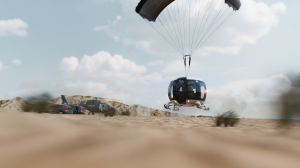HALO Space takes off with its first space tourism test flight
Space tourism company aims at flying 400 commercial trips and 3,000 passengers per year by 2029
Founded in 2021 and incubated by global consulting firm Arthur D. Little, HALO Space has already raised €3 million in pre-seed and seed funding. The company is now ready to take off with the goal of becoming a global benchmark in an industry that, according to Swiss investment bank UBS, has the potential to become a $3 billion business over the next decade. The first commercial flights are expected to start in 2025 and the company plans to operate in 4 continents, making a total of 400 commercial trips with 3,000 passengers per year from 2029, at a price between 100,000 and 200,000 euros per ticket.
Carlos Mira, CEO and founder of HALO Space, comments on the importance of this milestone "Our priority from day 1 has been technical and operational excellence. Over the past 12 months we have worked with the best and most experienced companies in the aerospace industry to leverage existing, proven, and safe technology. Our team is very pleased with what has been achieved in this first year, but we are even more excited about where we are headed: taking thousands of passengers to the edge of space in a life-changing experience up to 40 kilometers above the Earth".
Mr. Mira and Alberto Castrillo, Chief Technology Officer (CTO), have assembled a consortium of top-level aerospace companies such as CT Engineering Group, Aciturri, GMV and TIFR Balloon Facility to collaborate with HALO in the development of its flight program. Mr. Castrillo - an industry veteran with over 40 years at Airbus Group where he held executive roles in both engineering and production of four different airplane models - believes this setup is one of the key factors setting HALO Space apart in this sector. He explains that “working with such an experienced group of companies and leveraging existing, tried-and-true technology has allowed us to move fast while ensuring the highest safety standards are being applied in every step of the program development, and we are now ready to begin our test flights.”
HALO Space will conduct its first test flight in late 2022 in India
The space tourism company will take off in the third week of December with a prototype of its spacecraft on a test basis. A space balloon will soar 35 kilometers into the stratosphere taking the prototype for a flight that lasts approximately 6 hours at the Tata Institute for Fundamental Research (TIFR) balloon facility located in Hyderabad, India. TIFR is HALO Space's partner for the manufacturing of balloons for the test program, and its experience with more than 500 scientific balloons launched to an altitude of 43 kilometers has been of great value to the space tourism project.
Regarding the objectives of the first test flight, Mr. Castrillo, CTO of HALO Space, explains that "our goal is to successfully launch our flight capsule, reaching an altitude of 35 km before descending, and finally landing and recovering the prototype. In the process, we will validate the flight simulation algorithms, test the communication between the capsule and the flight control, as well as collect thousands of data points from the sensors installed on the capsule".
This first test flight will mark a new chapter in the history of space tourism. Starting with the test phase, HALO Space will soon offer a safe, comfortable, and more affordable way to experience traveling to the edge of the Earth’s atmosphere, with the proposed goal of reaching 400 commercial trips by 2029.
About HALO Space
HALO Space is a global Near Space tourism company, which will offer zero-emission commercial flights of 25-40 km altitude allowing to see the curvature of the planet Earth for 4-6 hours. This will be possible thanks to its aerospace balloon that will be equipped with a pressurized capsule with capacity for 8 passengers and a pilot, and which has a circular window from which you will have a 360-degree view of the vastness of the universe.
Founded in 2021, HALO Space was initially incubated by the prestigious consulting firm Arthur D. Little in its Breakthrough Incubator program. Having secured 3 million euros in seed funding, HALO operates independently and it's led by industry veterans Carlos Mira, CEO, and Alberto Castrillo, Chief Technology Officer (CTO). HALO Space will work closely with a consortium of top-tier aerospace companies, including CT Engineering Group, Aciturri, GMV and TIFR, in the development of its Space Flight program.
For more information, visit Halo Space (halospaceflight.com).
Press Contact EU
Juan A. Francés
Garbiñe Plazas
Jaime Iglesias
HALOSPACE@estudiodecomunicacion.com
Tlf: +34 91 576 52 50
Press Contact UK
Tom Huddart – tom.huddart@camarco.co.uk
Marie Sterry – marie.sterry@camarco.co.uk
Tlf: +44 (0) 20 3757 4991
Juan A. Francés
HALOSPACE@estudiodecomunicacion.com
Estudio de Comunicacion
Legal Disclaimer:
EIN Presswire provides this news content "as is" without warranty of any kind. We do not accept any responsibility or liability for the accuracy, content, images, videos, licenses, completeness, legality, or reliability of the information contained in this article. If you have any complaints or copyright issues related to this article, kindly contact the author above.

